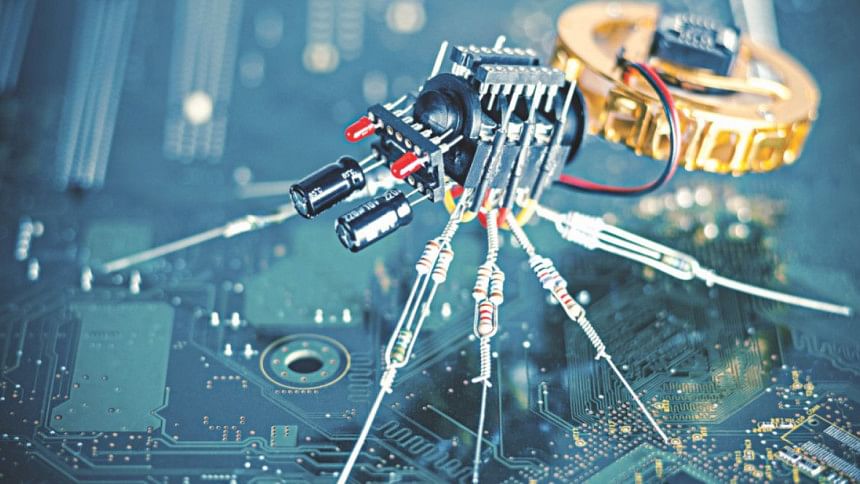Plenty of room for legal community

With the passage of time, technology is becoming small but smart, intelligent, more accurate, powerful and precise. One of the reasons here is that the scientists have been using nanoscale technology which enables them to develop smaller, stronger, effective and durable devices and products.
In TATA Nano, i-Pod Nano, and hundreds other products, the word 'nano' is used in the product name due to its huge branding value linking it with its Greek origin, which literary means 'dwarf', i.e. very small. However, in the study of nanotechnology, the word is used as a unit of measurement like metre, kilometre, gram, kilogram, byte, megabyte etc. 'nano' denotes one billionth. Therefore, for example, if we divide one matre in one billion parts, then every single of these parts will be considered as one nanometre or 1 nm. Nanoparticle is the smallest unit in the study of nanotechnology which is used to develop nanomaterials.
Nanoparticle or nanomaterial is basically nanoscale chemical and experts claim that whatever we see in the world is actually made up of chemicals. The use of nanoparticle or nanomaterials in various products is not new, rather people of ancient civilisations used these to develop products like 'Damascus steel', murals and pottery, ink, glaze, etc. To the people of Indian sub-continent, Kajal, traditional eye makeup or Bhasma, Ayurvedic medicine were very common. These are known as 'accidental nanomaterials'.
The modern study of nanotechnology is concerned about 'engineered nanomaterials' (ENMs), the idea of which was first shared by the Noble Laureate in Physics Richard Feynman in 1959 in his revolutionary talk 'There's plenty of room at the bottom'. Based on his idea, it can be said in simple words that 'nanotechnology' is the study of manipulating things at the atomic scale, i.e. between 1-100nm. As there is no consensus on the definition of the word and more than thirty similar definitions are available, the present trend is to define the word 'case-by-case'.
Nanotechnology has the potential to provide innovative solutions to many of the existing problems, e.g. energy, water treatment, disease diagnosis, drug delivery, food processing, health monitoring, etc., the world community has been facing. Already thousands of products ranging from cosmetic, food, sports instruments, automobile, etc. are available in supermarket shelves and all countries, irrespective of size and economy, along with business tycoons have been investing significant amount of money to grab the trillion dollar world market.
It is a matter of serious concern that many studies published in renowned scientific literatures like Nature, Science, Journals of American Chemical Society and Royal Society of United Kingdom confirmed that some ENMs like carbon nanotubes, gold, silver, titanium nanoparticles are capable to enter human health through number of ways- inhalation, skin and ingestion. Some of these ENMs have close resemblance with asbestos, though the stakeholders are claiming to conduct more research to ensure the exact behaviour of the ENMs in products, human health and in different components of the environment after their use.
Nanotechnology is no more an issue of scientists only rather it is a multi-disciplinary study where involvement of participants from all disciplines is desirable to exploit it for the common good. Taking into account the cradle-to-grave life-cycle of the ENMs there are, in fact, many issues of legal concern. Initially, the issue of patent, registration of chemicals, occupational health and safety, products safety, consumer protection and environmental law will be crucial. In the long run, other broad areas of laws like criminal law, torts, taxation, trade and business law, healthcare law, trade secret law, privacy and civil liberties, international law, etc. will be added to the list.
Apart from all these, one of the serious concerns will be the handling of nano-enabled products manufactured in the developed country and subsequently exported to developing countries and finally disposed in the environment after the use. Hence, in the absence of technological expertise, the developing countries may be used as 'dumping ground' or 'practical experiment site' for these products.
The world community led by the industrialised nations and international organisations have been working to shift the popular perception i.e. 'nanotechnology is dangerous' to 'nanotechnology can be developed safe'. Different initiatives are already taken.
European Union labelling law has made it compulsory to use the word 'nano' in food and cosmetic if ENMs are used as ingredients.
Countries like Iran, Thailand and Taiwan introduced certification system known as 'nano marking system'. European countries like France, Belgium and Denmark have already introduced compulsory registration of ENMs, if manufactured or imported in the country beyond the limit set by the regulators.
In 2006, it was claimed that nanotechnology was then in stage, where information and communication technology (ICT) was in 1960s and biotechnology was in 1980s. In last ten years, scientists from all over the world have proved this prediction true. We are now emblazed with the innovations fueled by ICT and biotechnology. The next big thing is nanotechnology, which should be developed in a safe, sustainable and responsible manner and the members of the legal community have great roles to play to this end.
The writer is a PhD holder from the University of Malaya, Malaysia on “Legal and Regulatory Aspects of Nanotechnology”.

 For all latest news, follow The Daily Star's Google News channel.
For all latest news, follow The Daily Star's Google News channel. 



Comments